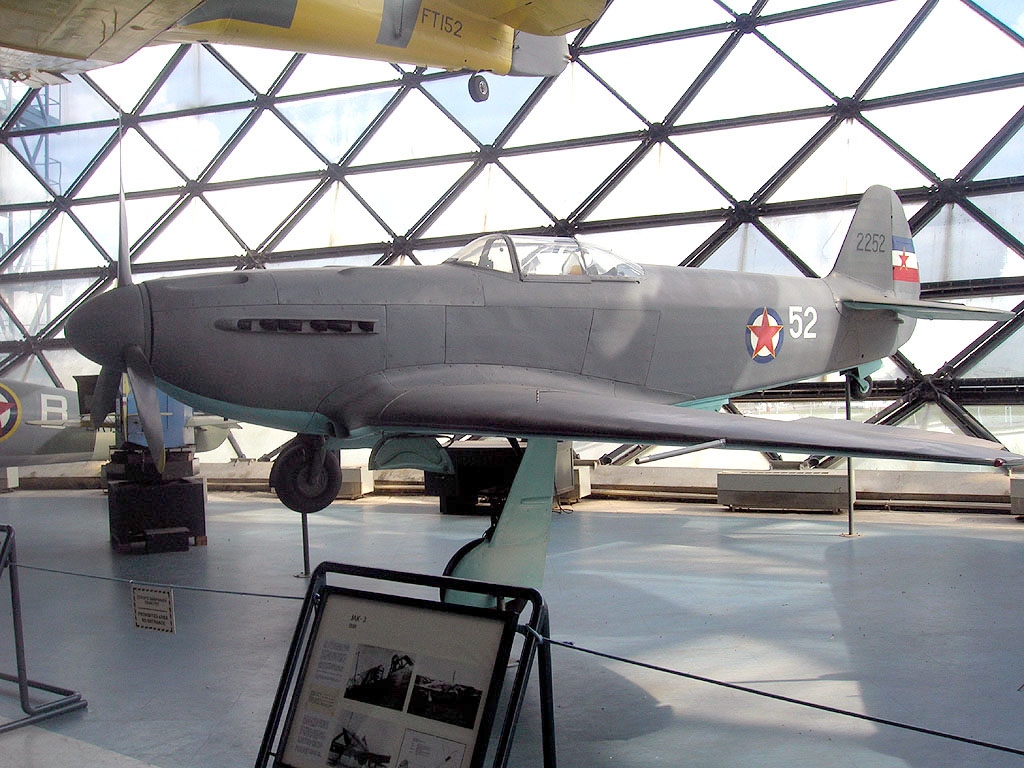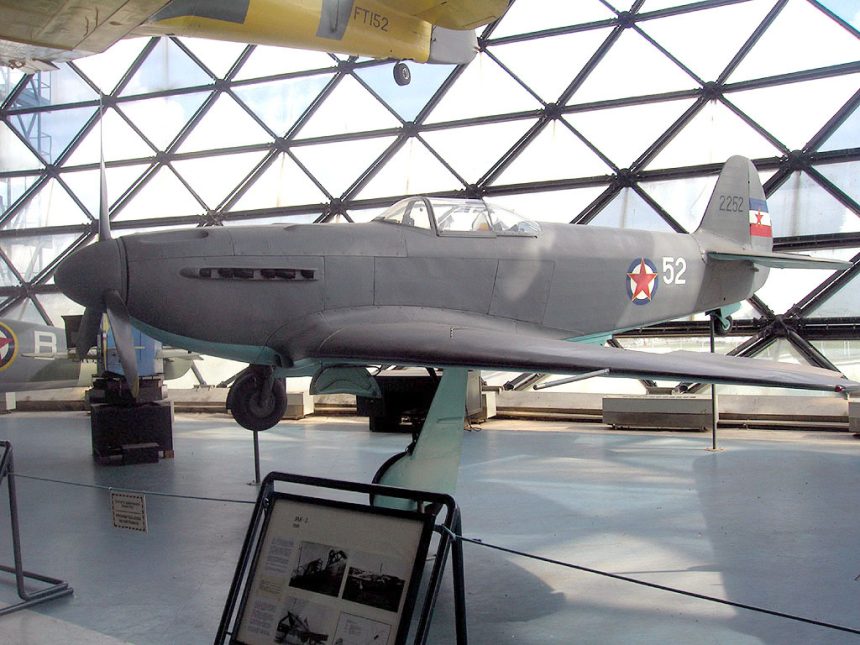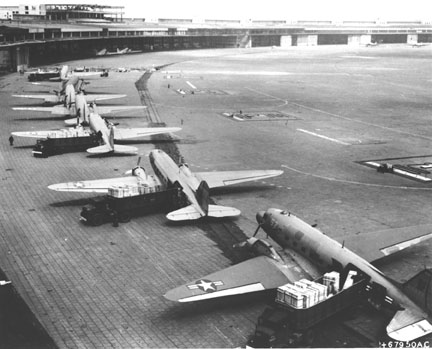The years following the end of WWII were very controversial and did not bring to a real peace for those territories claimed by two or more parts.
Just to remain in the old continent, the political tension between Italy and Yugoslavia for the brand-new border was followed by a deployment of military forces and by the continue use of them as a way of threat.
The modeling of borders under the control of the new world superpowers was on the way and the aim to reach the maximum sphere of influence on the satellite countries brought to some inevitable incidents.
After the end of World War II many C-47s remained in the USAAF, participating in the Berlin airlift and in other flights to bring supplies to the allied countries.
In particular, since 1946, the USAAF C-47As made some regular transport flights between Wien and Udine and, in order to avoid lengthening their route, it was a habit for the crews to fly through a portion of the Yugoslavian airspace.
Alarmed by the continuous intrusions of foreign planes, Dictator Tito ordered a reinforcement of the new born air force (Jugoslovensko Ratno Vazduhoplovstvo or JRV) on the Lubiana-Polje airport, deploying the 3rd Aerial Division equipped with Russian Yak-3 aircrafts.

The incidents did not wait too long to occur. One of the most significant ones occurred in July, 1946 when two fighters of the 254° Regiment intercepted an American transport C-47 that managed to avoid the contact by disappearing in the thick clouds. Another USAAF Douglas C-47 (Registration marks 43-15376) had not the same lucky destiny the following Aug. 9. The plane was shot down over the actual Slovenian airspace by pilot Dragomir Zacevic, who although fortunately survived and performed an emergency landing at the Belgrade airport. Onboard there were four American crewmembers (including William Crombie, the pilot) and four passengers – three Americans, two Hungarians, and a Turkish officer. Everybody onboard survived and after ten days was released – and could take possess again of their plane – by the Yugoslavian authorities. The Turkish officer was badly injured in the incident and was released after everybody else.
Ten days later the worse occurred.
Lieutenants Mirolad Knezev and Vladimir Vodopivec were on duty on the Radovljca airfield that late morning, when the air siren rang over the ghostly sound of war.
They pitched their Yak-3 fighters at maximum speed on the runway and shortly they intercepted the intruder, another USAAF Douglas C-47, which was shot down in flames, killing all the crew onboard: Harold Schreiber, Glen Freestone, Richard Claeys, Matthew Comko and Chester L. Lower.
In the Western world the reaction was unanimous against the ruthless act perpetrated by the Yugoslavian air force but Tito’s dictatorship soon justified their action providing some figures: during the months of July and August 1946 alone, more than 170 violations of his airspace had occurred!
This statement encountered the complete disagreement of the counterpart.
The United States asserted the plane had received by the authorities before the flight a specific order to avoid the Yugoslavian airspace; the unintended violation happened only because the crew – due to very bad weather conditions – diverted the course from the one they previously planned.
The United States criticised how the Yugoslavian fighters attacked the transport plane with repeated gun shots without any request of immediate landing.
This is the statement made by the Department of State following the incident:
“[The Yugoslavian fighters]…made no signal which could be interpreted as a landing signal but had merely wobbled their wings – which, according to United States practice, was the accepted signal to attract attention; and that the plane was again fired on while rapidly descending in an effort to land.”
This incident was interpreted by the United States and most of the international community as a clear and evident violation of international rules, regardless of the exact territory over which the plane was flying at the time of the incident.
Through the words of their Ambassador in Belgrade, the United States highlighted the gravity of the situation by stating how the incident represented a specific violation to article 51 of the Chart of the United Nations:
“…Regardless of whether the planes were a short distance within or without the corridor, they were unarmed passenger planes en route to Udine, in Italy. Their flight in no way constituted a threat to the sovereignty of Yugoslavia. The use of force by Yugoslavia under the circumstances was without the slightest justification in international law, was clearly inconsistent with relations between friendly states, and was a plain violation of the obligations resting upon Yugoslavia under the Charter of the United Nations not to use force except in self-defence. At no time did the Yugoslav government advise the United States Government that if one of its planes should, because of weather conditions, be forced a mile or two outside of the corridor or, because of mechanical troubles, should find itself outside of that corridor, the Yugoslavian Government would shoot to death the occupants of the plane. The deliberate firing without warning on the unarmed passenger plane of a friendly nation is in the judgment of the United States an offence against the law of nations and the principles of humanity.”
Yugoslavian Government never challenged the US thesis regarding the need to protect the safety of the aircrafts – both civilian and military – flying over a foreign territory on a situation of distress due to bad weather conditions, engine failures or space disorientation.
Nevertheless, the Yugoslavian Ambassador in Washington declared that during the period of time from July to August 1946, more than two 278 non-authorized flights took place over the Yugoslavian territory and, in most of the cases, they were flights made with the purpose of violating Yugoslavian sovereignty.
On August, 31th 1946, Marshall Tito wrote a note to the US ambassador, asserting the complete disposal of its government to cease any military activities that could prejudice the safety of flight crews over the Yugoslavian territory; at the same time, he kept on refusing the responsibility for the event.
Incidents did not stop completely in the following years. At the end of 1948 the situation slowly calmed down, but only in appearance: it was time to shift the range of operations in a larger theater.
Cold war had just started and the whole world, from the Alaskan border to the far South east of Asia was the playing scenario for the two nuclear superpowers.
The era of countless secret air battles through the skies of the world had just begun, often needing the efforts and the sacrifices of unknown and forgotten heroes.
© David Cenciotti & Simone Bovi










